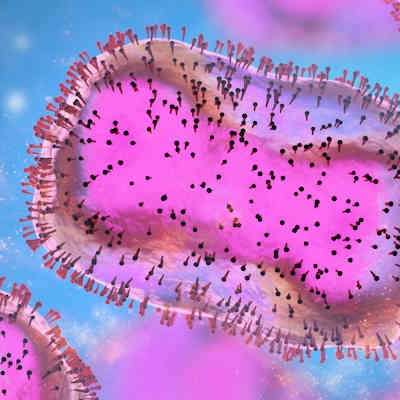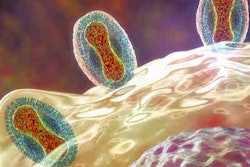
Considering the U.S. has declared the rise in mpox cases as a public health emergency, representatives at a Pennsylvania health network are urging healthcare professionals, including dental teams, to help stop the spread of the virus.
Dr. Jeffrey Jahre, senior vice president of Medical and Academic Affairs and section chief emeritus of infectious diseases at St. Luke's University Health Network, said that dentists and other professionals should be aware of mpox symptoms because early recognition of the virus can curb its spread.
Common symptoms are fever, lymph node swelling, and a rash, and about 70% of cases include oral lesions. St. Luke's staff are starting to see oral mpox symptoms in patients.
The number and location of facial lesions can vary considerably. They can develop on the lips and be papules, pustules, clear vesicles, or open sores with or without scabs. Intraoral lesions are equally diverse and could be present anywhere in the mouth, including gums, tongue, cheeks, palate, and throat.
Though mpox is not as easily transmitted as other viruses, such as COVID-19, it is critical that dental teams, including dental hygienists, understand the disease. This is especially important since mpox lesions can resemble other well-known conditions, including herpes simplex sores, canker sores, and hand-foot-and-mouth lesions.
The facial lesions can vary in number and location including lips and can be papules, pustules, clear vesicles, or open sores with or without scab formation. The intraoral lesions are equally diverse and could be present anywhere in the mouth including gums, tongue, cheeks, palate, and throat. These lesions can resemble other well-known conditions such as herpes simplex sores, canker sores, lesions of hand-foot-mouth disease, or trauma.
"It is very important at this time that oral care programs, such as those that train dental hygienists and other dental professionals, are aware of and alert to oral monkeypox symptomology and understand how to handle cases," Dr. Wayne Saunders, chief of St. Luke's Center for Oral & Maxillofacial Surgery, said in a press release.
Most often, mpox is transmitted through direct contact with body fluids or lesions from an infected person. A less common mode of transmission is through materials that have touched mpox lesions. Though anyone can become infected, more than 95% of mpox cases are in men who have sex with other men who engage in intimate activity with multiple partners.
However, since the disease is expanding beyond this group, symptoms in others cannot be ignored. Currently, 12,689 cases of mpox have been reported in the U.S., according to data released on August 16 from the U.S. Centers for Disease Control and Prevention (CDC). To date, there have been eight reported cases in children. This outbreak has not resulted in any deaths.
Therefore, getting a patient's complete medical history to ascertain the origin of lesions cannot be overemphasized, Saunders said.
Patients with suspicious lesions should be referred to primary care providers or urgent care centers for conclusive testing, Saunders advised.




















